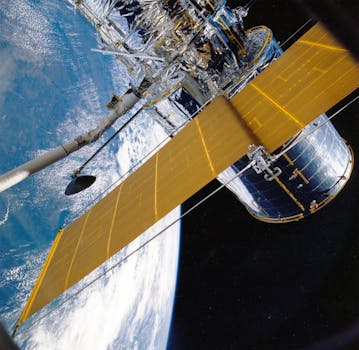GEO Satellites: Understanding the Technology and Applications of Geostationary Orbit Satellites

GEO Satellites: Understanding the Technology and Applications of Geostationary Orbit Satellites
GEO satellites, or geostationary orbit satellites, are a type of satellite that orbits the Earth at an altitude of approximately 36,000 kilometers, which is about 1/10 of the distance from the Earth to the Moon. At this altitude, the satellite’s orbital period is the same as the Earth’s rotational period, which means that the satellite remains stationary relative to a fixed point on the Earth’s surface. This unique characteristic makes GEO satellites ideal for a wide range of applications, including telecommunications, navigation, and weather forecasting.
GEO satellites were first proposed in the 1940s by science fiction author Arthur C. Clarke, who recognized the potential for satellites in geostationary orbit to provide global communications coverage. The first GEO satellite, Syncom 2, was launched in 1963, and since then, hundreds of GEO satellites have been launched, providing a wide range of services, including television broadcasting, telecommunications, and navigation.
How GEO Satellites Work
GEO satellites work by receiving and transmitting signals to and from Earth-based stations. The satellite’s antenna receives signals from the Earth station and re-transmits them back to the Earth, allowing for global coverage. The satellite’s transponder, which is a device that receives and re-transmits signals, is the key component of the satellite’s communication system. The transponder amplifies the received signal and changes its frequency to avoid interference with other signals.
GEO satellites are typically powered by solar panels, which convert sunlight into electricity. The satellite’s power system also includes batteries, which provide backup power during periods of eclipse, when the satellite is in the Earth’s shadow. The satellite’s propulsion system, which includes thrusters and fuel, is used to maintain the satellite’s orbit and make any necessary adjustments.
Applications of GEO Satellites
GEO satellites have a wide range of applications, including telecommunications, navigation, and weather forecasting. In telecommunications, GEO satellites provide global coverage, allowing for international broadcasting, mobile communications, and internet connectivity. GEO satellites are also used for navigation, providing location information and timing signals for GPS and other navigation systems.
In weather forecasting, GEO satellites provide images of the Earth’s atmosphere and oceans, allowing for the tracking of weather patterns and the prediction of weather forecasts. GEO satellites are also used for Earth observation, providing data on the Earth’s climate, land use, and natural resources.
The Future of GEO Satellites
The future of GEO satellites is exciting and promising, with new technologies and applications being developed all the time. One of the most significant advancements in GEO satellite technology is the development of high-throughput satellites, which provide faster and more reliable internet connectivity. These satellites use advanced technologies, such as beam-forming and frequency reuse, to provide higher bandwidth and lower latency.
Another area of development is the use of GEO satellites for 5G and 6G networks. GEO satellites can provide global coverage and high-speed connectivity, making them an attractive option for 5G and 6G networks. Additionally, GEO satellites can be used to provide backhaul connectivity for remote and underserved areas, where fiber-optic cables are not available.
In conclusion, GEO satellites play a crucial role in modern telecommunications, navigation, and weather forecasting. With their unique characteristics and wide range of applications, GEO satellites will continue to be an essential part of our daily lives, providing global coverage and high-speed connectivity.




